The Santa Barbara County Air Pollution Control District maintains an air pollution emission inventory for the County. The air pollutants tracked in this inventory are known as criteria pollutants, which are pollutants with health-based state and federal ambient air quality standards. Criteria pollutants include: reactive organic compounds (ROC), nitrogen oxides (NOx), carbon monoxide (CO), sulfur oxides (SOx), and particulate matter (PM10 and PM2.5). The emission inventory is compiled through a collaborative effort by the District and the California Air Resources Board (CARB), and is broken down into specified source categories:
Stationary sources are facilities that are typically subject to District permitting requirements. These sources can range in size from a large landfill to an oil & gas processing facility to a small autobody shop or gas station. Emissions from stationary sources are estimated by the District based on the annual reported information (throughput) from the permitted entity.
Area sources are typically small, geographically dispersed processes that generally are not subject to District permitting requirements. For example, area sources include natural gas combustion from residential homes (water heaters, furnaces, and laundry dryers), architectural coatings, and consumer products. Emissions from area sources are estimated jointly by either the District or CARB.
Mobile sources are subdivided into two categories: On-Road Motor Vehicles and Other Mobile Sources. On-Road Motor Vehicles consist of passenger cars, motorcycles, trucks, and buses. Other Mobile Sources consist of ships, planes, trains, and off-road equipment. Emissions from mobile sources are estimated by CARB.
Natural Sources consist of biogenic sources (e.g., organic compounds emitted by plants), geogenic sources (e.g., natural oil & gas seeps), and wildfires. Emissions from natural sources are estimated jointly by either the District or CARB. Please note that the inventory summaries presented on this page are “planning emission inventories,” which do not include the emissions from natural sources. This is because natural sources are not regulated nor controlled through the implementation of emission control measures. For more information on natural source emissions, please review the appendices in the most recent Ozone Plan.
2018 Emission Inventory Summary
Reactive organic compounds (ROCs) can be released through the use and evaporation of paints, solvents, and other volatile compounds, or through the combustion of fuels. ROCs contribute to ground-level ozone formation.
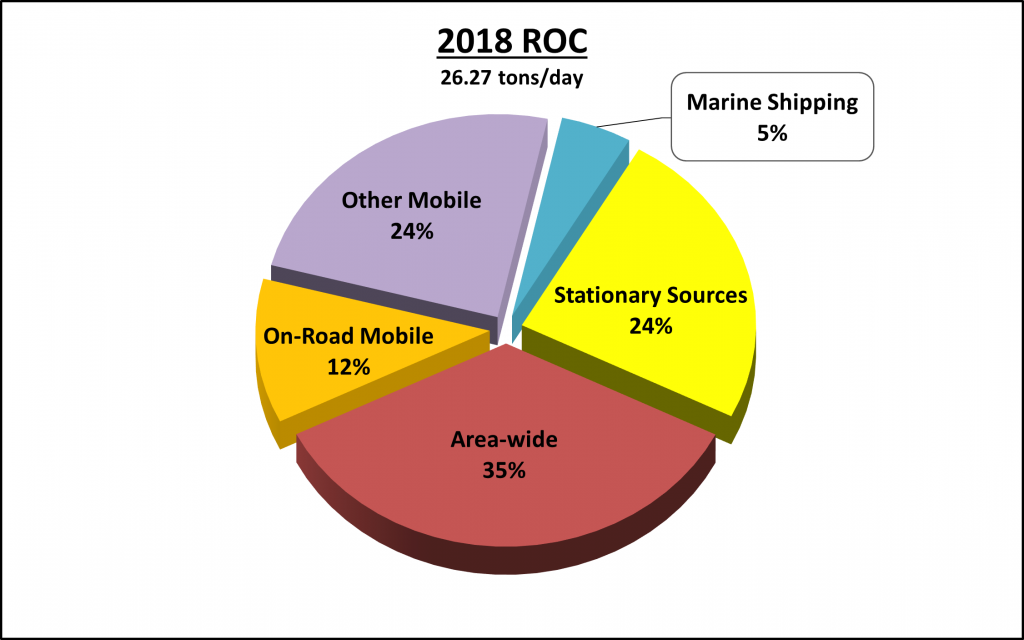
Oxides of nitrogen (NOx) consist mainly of nitric oxide (NO) and nitrogen dioxide (NO2), and they contribute to the formation of ground-level ozone. NOx is generated through the combustion of fuels from equipment like emergency generators, gas turbines, and mobile sources (cars, trucks, buses, ships, and off-road equipment).
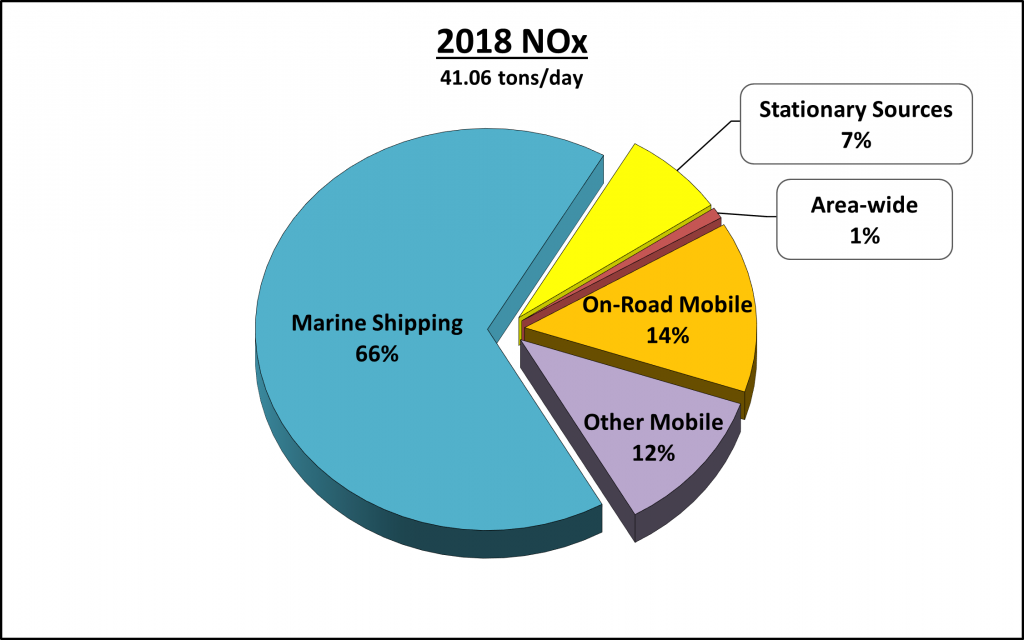
Ozone, a primary component of smog, forms through a complex photochemical reaction involving ROC, NOx, and the presence of heat and sunlight. Exposure to ozone can cause respiratory health effects such as coughing, shortness of breath and reduced lung function, and can aggravate asthma and other respiratory illnesses. This chart presents the combined amount of ROC and NOx since both pollutants need to be controlled to attain the state and federal ozone standards.
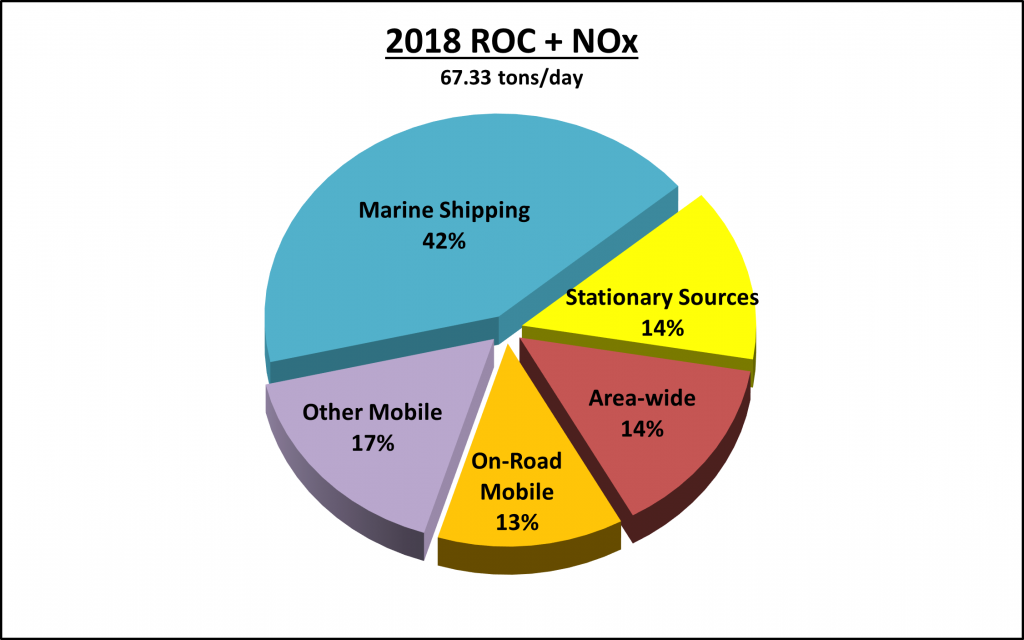
Carbon Monoxide (CO) is a colorless, odorless gas that can be emitted into the atmosphere from various combustion processes. Breathing air with a high concentration of CO reduces the amount of oxygen that can be transported to critical organs, like the heart and brain, causing dizziness and fatigue. Santa Barbara County is in attainment for the federal and state CO standards.
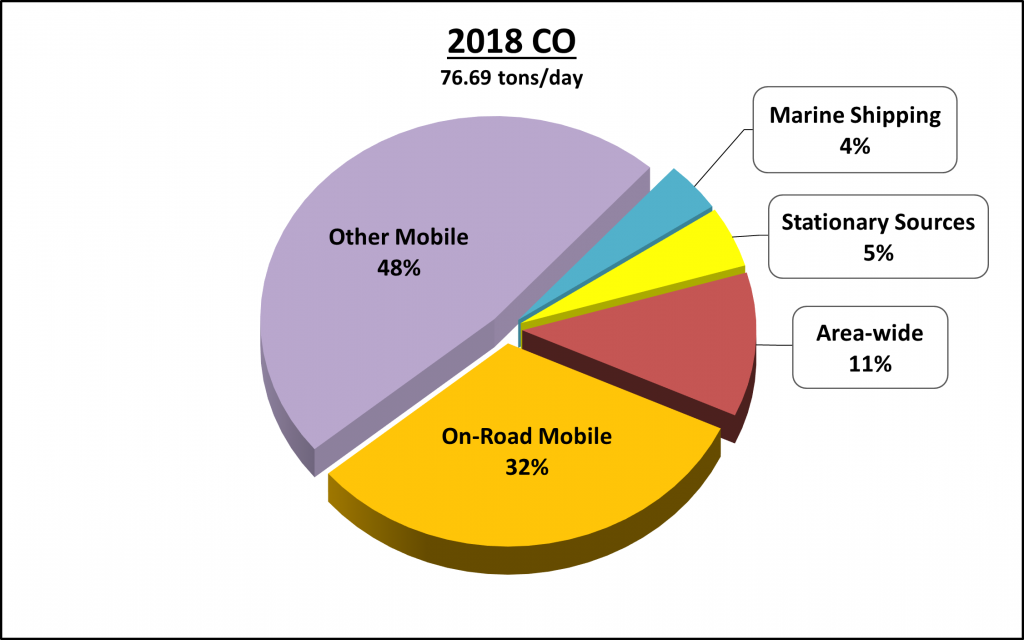
Sulfur oxides (typically SO2), can be emitted into the atmosphere from the burning of fossil fuels by power plants, industrial facilities, and transportation-related fuels. SOx can harm the respiratory system and can react with other compounds to form particulate matter pollution. Santa Barbara County is in attainment for the federal and state SOx standards.
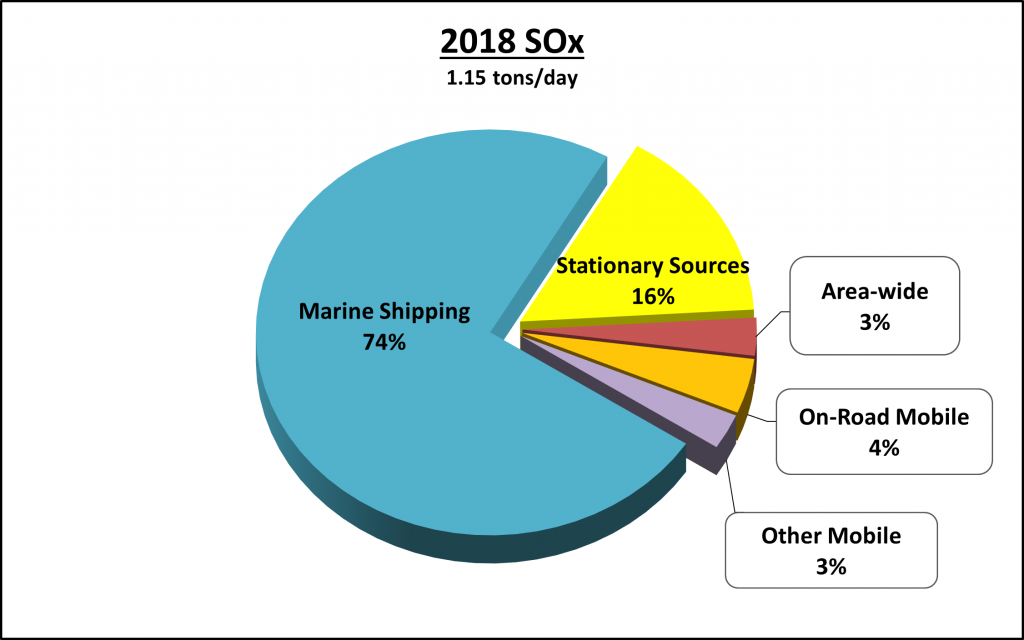
PM10 is particulate matter less than 10 microns in diameter and PM2.5 is particulate matter less than 2.5 microns in diameter. Suspended particles less than 10 microns in diameter (about one-fifth of the diameter of a human hair) can bypass the body’s protective mechanisms and be deposited into our lungs, causing respiratory and cardiovascular illnesses. PM2.5 pollution is a subset of PM10 and can cause more serious respiratory and cardiovascular health issues. Santa Barbara County is in attainment for the federal PM standards, but is nonattainment for the state PM10 standards.
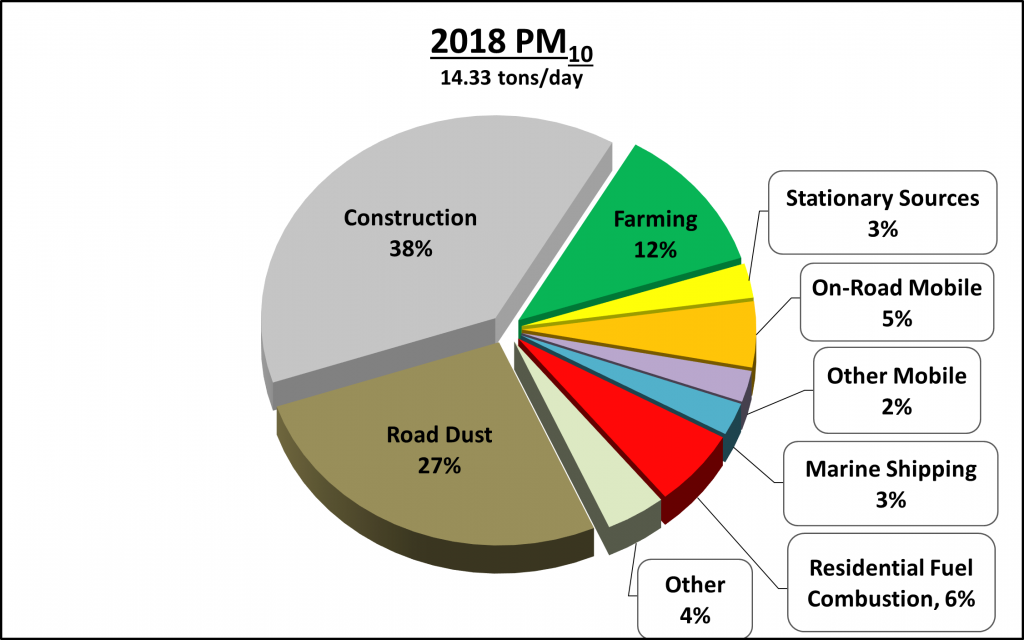
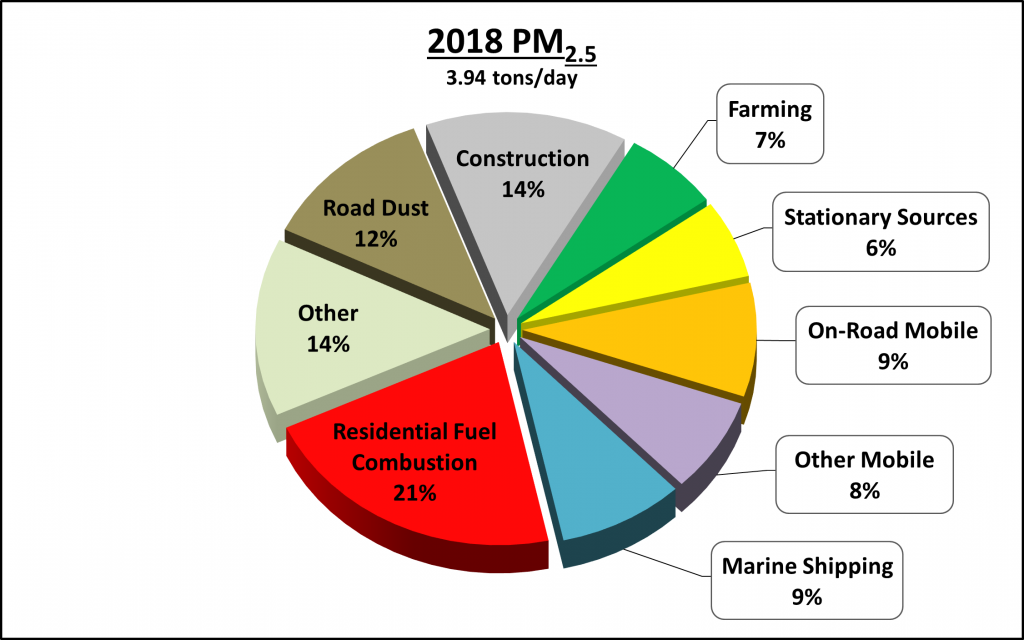
Emission Inventory Trends 2000-2020
The District’s emission inventory accounts for pollutants emitted from all anthropogenic emission sources (human-made sources, which excludes natural sources) that are generated onshore within Santa Barbara County as well as those emissions within 100 nautical miles offshore (on the Outer Continental Shelf). The historical emission trends show that emissions have generally decreased over time, largely due to the implementation of District emission control measures as well as state and federal regulations that control mobile sources.
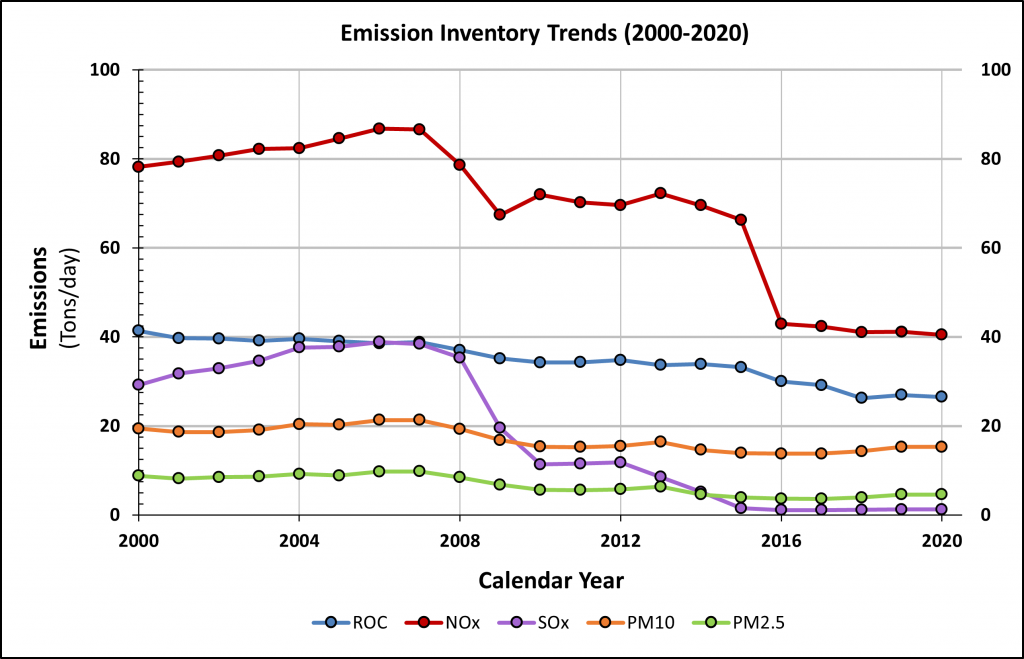
Additional Emission Inventory Resources
- View the District’s Final 2022 Ozone Plan.
- View the District’s Permitted Facilities Map
- View CARB’s Pollution Mapping Tool
For more information regarding the District’s emission inventory, please contact us at (805)-979-8050.

